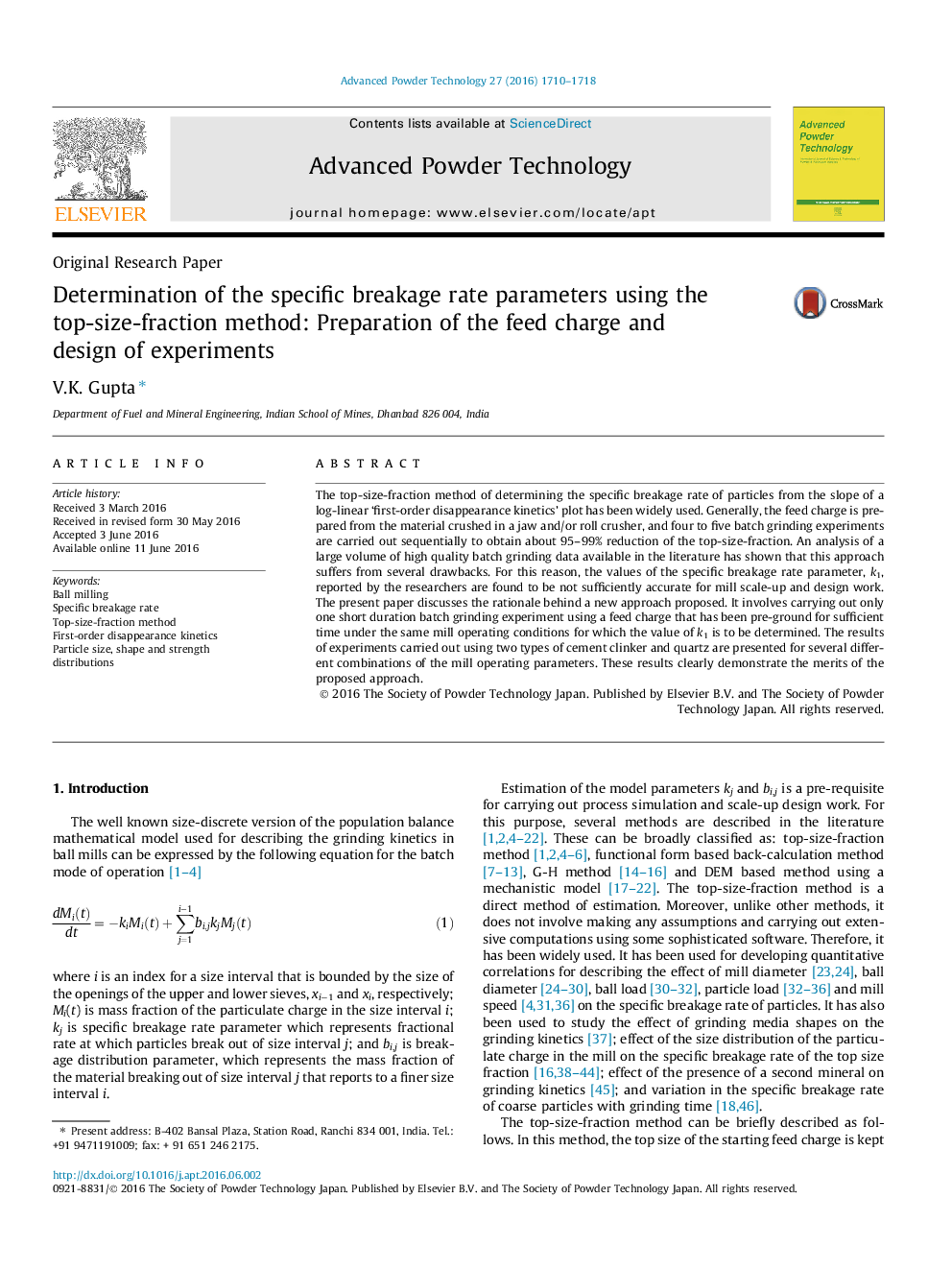| Article ID | Journal | Published Year | Pages | File Type |
|---|---|---|---|---|
| 143965 | Advanced Powder Technology | 2016 | 9 Pages |
•The drawbacks of using the crushed material as the feed charge pointed out.•Use of material pre-ground under the test conditions recommended for better results.•The rationale behind the proposed methodology explained.•Results presented for two types of cement clinker and quartz.•Variables studied included mill speed, ball load, particle load and particle size.
The top-size-fraction method of determining the specific breakage rate of particles from the slope of a log-linear ‘first-order disappearance kinetics’ plot has been widely used. Generally, the feed charge is prepared from the material crushed in a jaw and/or roll crusher, and four to five batch grinding experiments are carried out sequentially to obtain about 95–99% reduction of the top-size-fraction. An analysis of a large volume of high quality batch grinding data available in the literature has shown that this approach suffers from several drawbacks. For this reason, the values of the specific breakage rate parameter, k1, reported by the researchers are found to be not sufficiently accurate for mill scale-up and design work. The present paper discusses the rationale behind a new approach proposed. It involves carrying out only one short duration batch grinding experiment using a feed charge that has been pre-ground for sufficient time under the same mill operating conditions for which the value of k1 is to be determined. The results of experiments carried out using two types of cement clinker and quartz are presented for several different combinations of the mill operating parameters. These results clearly demonstrate the merits of the proposed approach.
Graphical abstractFigure optionsDownload full-size imageDownload as PowerPoint slide
